3d human photoscanned 3D model
A typical 3D model of a man may include the following characteristics:
Anatomy: The model would generally feature a realistic depiction of the male human anatomy, including the proportions, musculature, and skeletal structure.
Textures and Materials: The model would have applied textures and materials to simulate the appearance of skin, hair, eyes, and clothing. These textures can vary in complexity and quality, ranging from simple colors to highly detailed surface patterns.
Pose and Expression: The model can be created in various poses, such as standing, sitting, or in action poses. The facial expression and body language of the model can also be customized to convey specific emotions or moods.
Rigging and Animation: A 3D model of a man may be rigged, which means it has an internal skeleton and joints that allow for posing and animation. This rigging enables the model to be animated realistically, with movements such as walking, running, or performing other actions.
Level of Detail: The level of detail in a 3D model can vary depending on its purpose. High-resolution models may include intricate details like individual strands of hair, wrinkles, or pores, while lower-resolution models may have simplified features.
Accessories and Props: The model can be further enhanced with the addition of accessories like glasses, hats, or jewelry. Props such as weapons or tools can also be included to suit specific scenarios or requirements.








